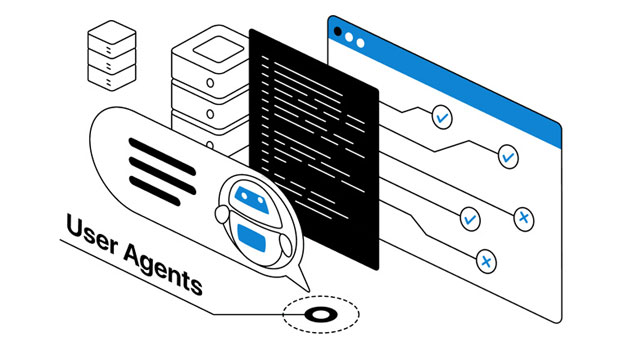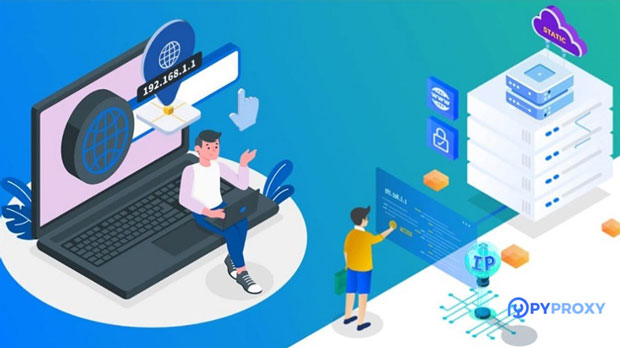When it comes to choosing the right proxy service for online activities, stability is one of the most important factors to consider. Two popular static proxy services, PYPROXY and Wingate, stand out for their offerings. This article aims to provide an in-depth comparison of their IP stability, a critical aspect for users who require consistent and reliable connections, especially for web scraping, SEO monitoring, or accessing geo-restricted content. By analyzing the performance, reliability, and technical differences between Pyproxy and Wingate, users can make an informed decision on which service is more suited to their needs. Introduction to Static Proxy ServicesStatic proxy services are an essential tool for individuals and businesses needing reliable, unchanging IP addresses over extended periods. Unlike dynamic proxies, which rotate IPs regularly, static proxies offer a fixed IP address for a user, ensuring uninterrupted connections. Both Pyproxy and Wingate are renowned for their static proxy offerings, but the performance and stability of their IP addresses can vary greatly, which is why a comparison is crucial.What is Pyproxy?Pyproxy is a proxy service provider that specializes in offering stable static IPs. The service boasts a strong infrastructure designed to support high-demand users such as data collectors, businesses, or developers working on long-term projects. The key selling points of Pyproxy include its reliability, fast response times, and user-friendly interface. Pyproxy allows users to set up multiple proxies in different geographical locations, ensuring flexibility for various use cases.One of Pyproxy’s strongest features is the emphasis on IP stability. With low latency and minimal IP downtime, users are guaranteed a consistent connection. The company monitors its proxy servers to ensure they are always up and running, minimizing the risk of downtime that could impact work efficiency.What is Wingate?Wingate, on the other hand, is an established proxy service provider with a robust network of static IPs. Known for its advanced configuration options, Wingate offers customizable proxy services suitable for a variety of needs. It is widely used in industries such as e-commerce, online marketing, and social media management, where stable and fast connections are a requirement.Wingate also provides impressive IP stability, but it focuses more on giving users the flexibility to configure the proxies according to specific needs. This includes a wide selection of location options, as well as the ability to rotate IP addresses manually for enhanced security or to avoid IP blacklisting. Although Wingate is often praised for its versatility, its IP stability might be slightly less predictable compared to Pyproxy, especially for users relying on uninterrupted access.IP Stability: Key ComparisonWhen it comes to the core comparison between Pyproxy and Wingate, the focus should be on how their services perform in terms of IP stability.1. Pyproxy’s Stable IP Addresses Pyproxy offers highly stable IPs with minimal disruptions. The service guarantees that the IP addresses provided will not change, making it ideal for activities that require a fixed online presence. Whether you’re running an SEO campaign, scraping websites for data, or engaging in online research, Pyproxy’s static IP service ensures consistency. The company’s network infrastructure is highly optimized for uptime, and users experience fewer connection drops or IP changes.2. Wingate’s IP Stability Wingate, while offering static IP addresses, places a greater emphasis on versatility. Users can select from various IPs across different locations and switch between them based on their needs. However, this flexibility can sometimes lead to slight interruptions in service, especially for long-term projects that rely on one IP address. For users who need strict IP stability, this variability might cause issues. Nonetheless, Wingate’s overall network is reliable, and IP stability is generally strong unless there is a specific configuration or network issue.Factors Affecting IP StabilitySeveral factors can influence the stability of IP addresses in any proxy service. These include network infrastructure, server load, geographical location, and the specific configuration settings chosen by the user.1. Network Infrastructure Pyproxy’s infrastructure is designed to prioritize stability. Their servers are optimized to handle large volumes of requests, ensuring that the IPs provided remain stable over time. Wingate also has a strong infrastructure but is more focused on customization and user flexibility, which may result in occasional network hiccups.2. Server Load and Traffic The stability of an IP address can be compromised if the proxy service’s server becomes overloaded. Pyproxy typically handles high traffic better due to its streamlined approach, which focuses on keeping things simple for users. Wingate, however, offers advanced options that may require more user oversight in managing server load and traffic allocation.3. Geographical Location The location of the proxy server also plays a crucial role in IP stability. Pyproxy allows users to choose servers from various geographical regions, but its focus is more on offering a seamless experience with fewer regional fluctuations. Wingate also offers a variety of global locations but might encounter instability in certain areas due to less rigorous optimization for specific locales.Which Service is Better for IP Stability?Both Pyproxy and Wingate offer strong IP stability, but the choice between the two ultimately depends on the user’s needs.- Pyproxy is ideal for users who need highly reliable, unchanging IP addresses with minimal risk of downtime. Its infrastructure is designed to prioritize stability, making it suitable for long-term, high-demand projects.- Wingate, on the other hand, is better for users who value flexibility and customization. While it offers stable IPs, the occasional need for manual configuration or IP rotation might not be suitable for users requiring strict, uninterrupted service.In conclusion, the choice between Pyproxy and Wingate comes down to the specific needs of the user. Pyproxy stands out for its stability, making it a reliable choice for users who need a consistent, uninterrupted connection. Wingate, while versatile and customizable, may experience occasional fluctuations in IP stability, especially for users requiring a single static IP over an extended period.Ultimately, understanding the trade-offs between stability and flexibility will help users select the proxy service that best fits their requirements. Both services are excellent options, but Pyproxy’s focus on IP stability gives it a slight edge for those who prioritize long-term consistency.
Oct 11, 2025


































































